The story behind Glasgow’s Burrell Collection
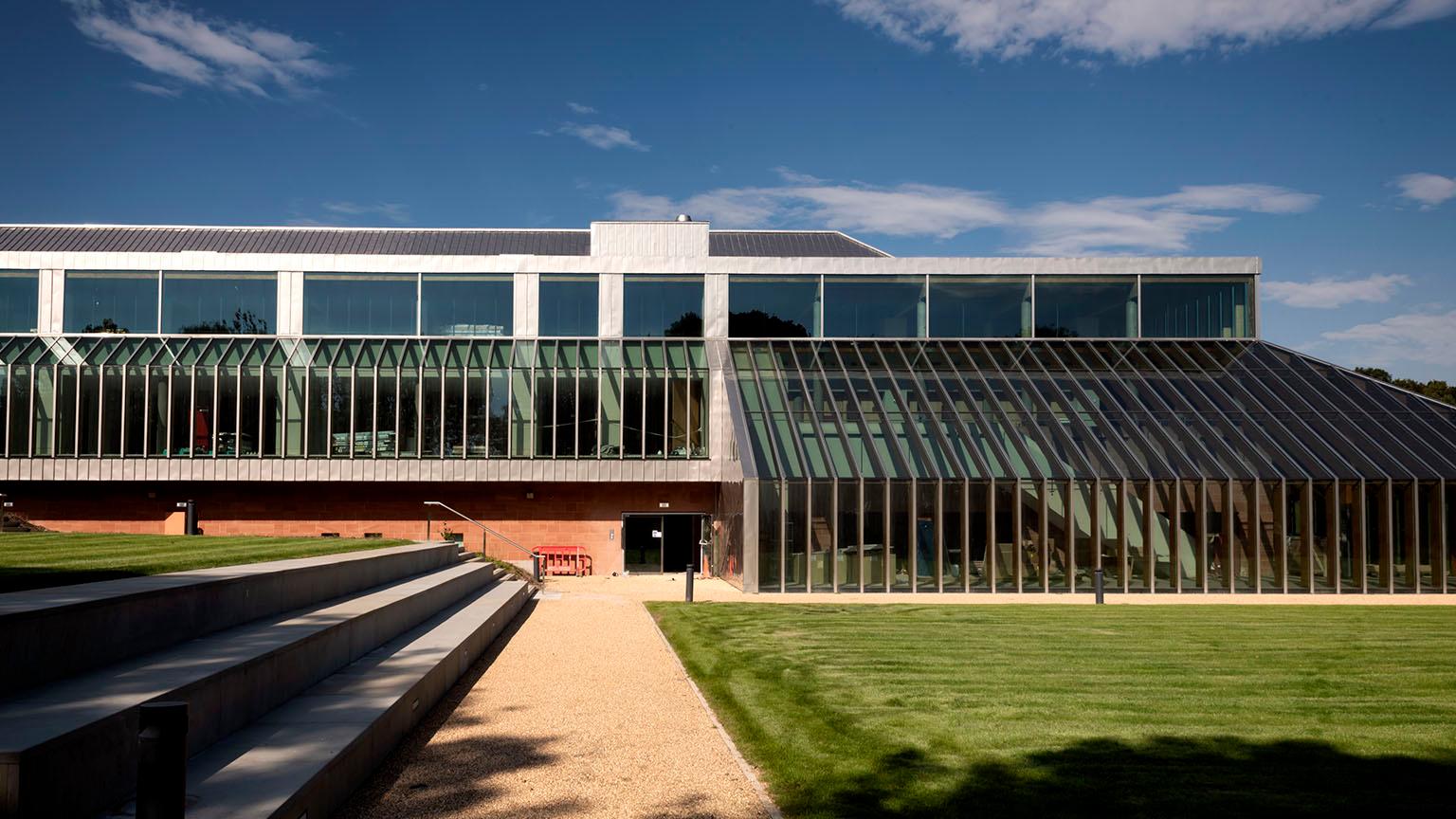
David Trigg explores the Burrell Collection, home to one of the most
significant personal collections ever gifted to the public, which is
reopening after an extensive refurbishment.
Who was William Burrell?
When Sir William Burrell donated his vast collection of art and artefacts to the City of Glasgow in 1944, it was deemed one of the greatest gifts ever made to any city. This was no exaggeration. Comprising more than 9,000 objects from three continents and covering a 6,000-year period, the collection amassed by the Glaswegian shipping magnate is astonishing in its breadth and quality. At his death in 1958, it included antiquities, Chinese ceramics, Persian carpets, Gothic tapestries, medieval stained glass, early Renaissance works of art, 19th-century French painting and much more besides. Since 1983 the collection has been housed in a purpose-built gallery in Glasgow’s Pollok Park. The combination of exceptional art and architecture set within one of Europe’s largest urban green spaces was an immediate success, described by The Glasgow Herald as ‘a magical mystery tour and an aesthetic event rolled into one’. The Burrell Collection has since been a key driver in Glasgow’s transformation from a place of post-industrial decline to one of the great cities of culture. In October 2016 the building closed for a major £68.25 million refurbishment. Reopening this spring, its greatly expanded spaces promise improved access, understanding and appreciation of one of the world’s most extraordinary personal collections.
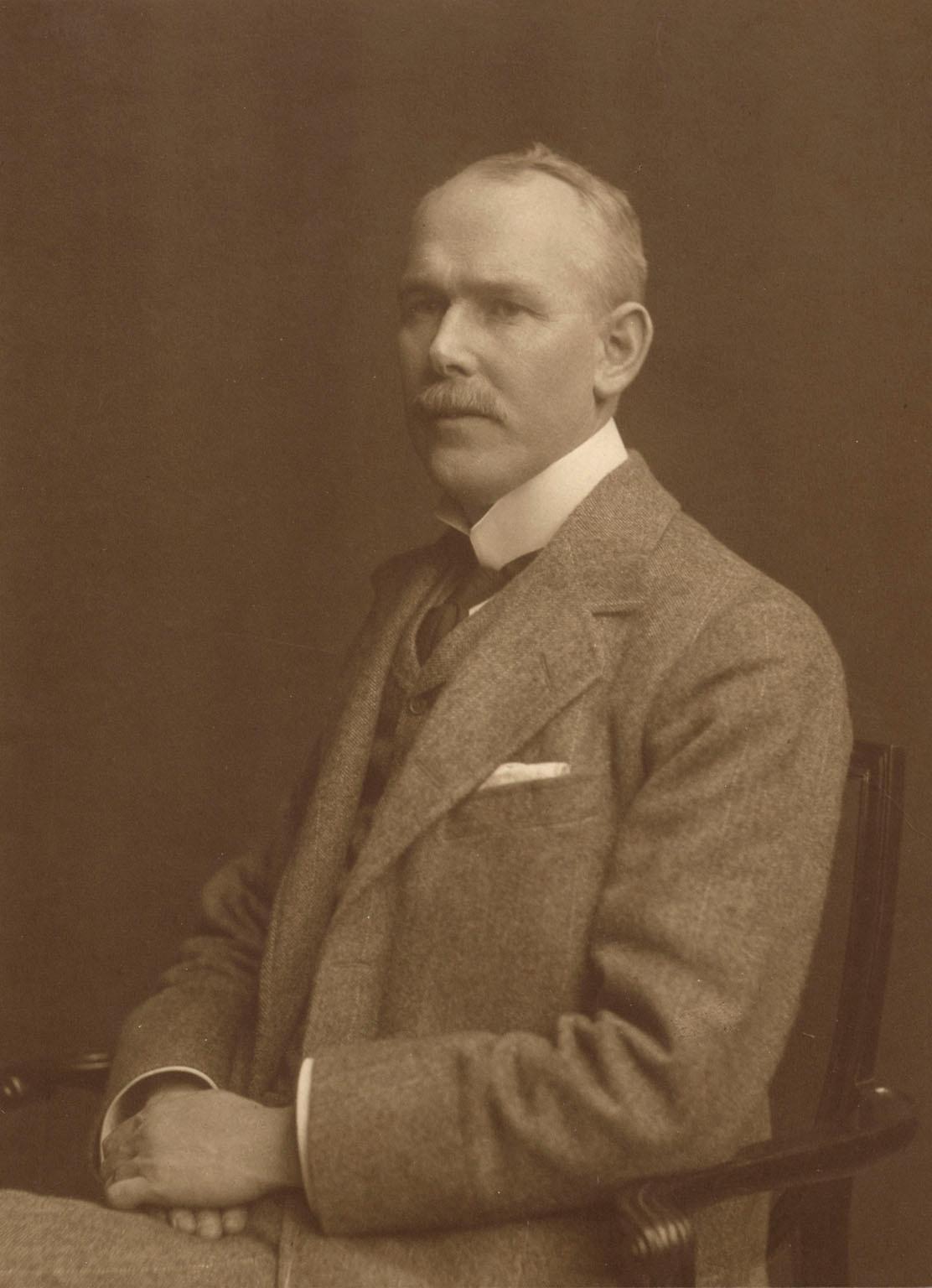
William Burrell was born in Glasgow on 9 July 1861, the third of nine children to William and Isabella Burrell. ‘He grew up in a house with art,’ explain Isobel MacDonald and Martin Bellamy, authors of a new biography, William Burrell: A Collector’s Life. His mother, in particular, was interested in the arts and it is said that he inherited his taste for collecting from her. Burrell reportedly began buying art in his teens, spending money intended for a new cricket bat on a painting. But it was his success in business that allowed him to pursue his passion for more than 75 years. The family’s shipping company, Burrell & Son, had been established by his grandfather in the mid-1800s and Burrell left school at 14 to work there as a clerk, joining his eldest brother, George. When their father died in 1885, the brothers took joint charge of the business and, under their shrewd management, it flourished internationally; after building up and selling two great ocean-going fleets, they had made a considerable fortune.
Burrell was one of Scotland’s numerous industrialists who developed an interest in buying art towards the end of the 19th century, though none collected as ambitiously or as voraciously as him. The range of objects he accumulated reveal an unfailing eye for good design and quality craftsmanship, and while his eclectic and varied taste was unparalleled, he was no millionaire magpie. He focused on developing a number of distinct specialist areas, primarily Gothic art, modern European painting and Chinese art. This wasn’t in any way unusual for collectors of the period, though the scale and depth to which he pursued these interests was. Burrell’s knowledge was largely acquired through self-education, which is evidenced by his extensive personal library of more than 1,500 volumes, many of which relate to his collection. Also important were the dealers he purchased from. ‘He built long-term relationships with a small number of dealers who helped develop his knowledge and identify potential works to add to the collection,’ explain MacDonald and Bellamy. Although these men acted as Burrell’s personal advisers, he never made rash decisions. Indeed, Burrell enjoyed haggling over prices, a tactic that secured him many discounts, but sometimes caused him to miss out on important pieces.
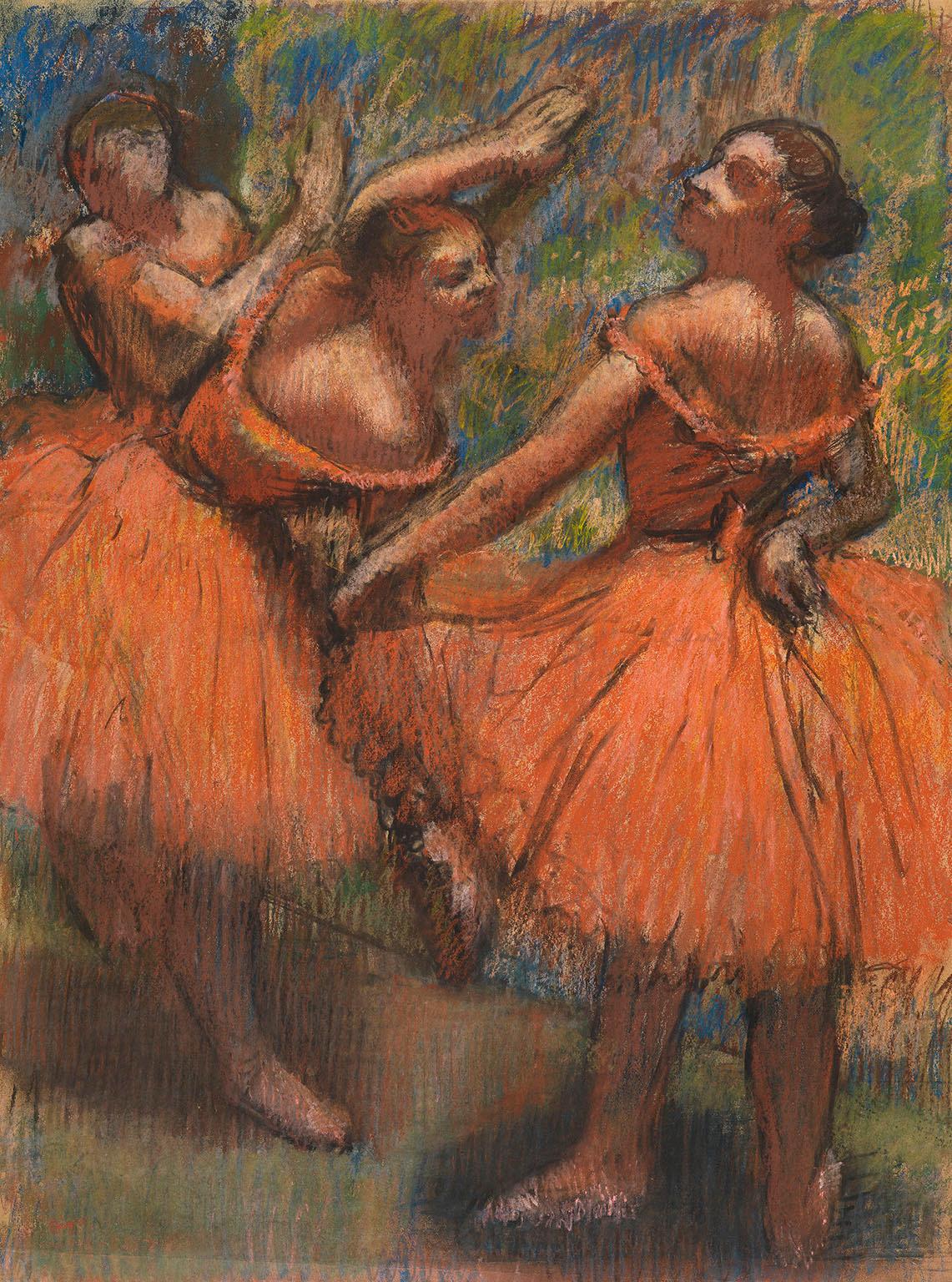
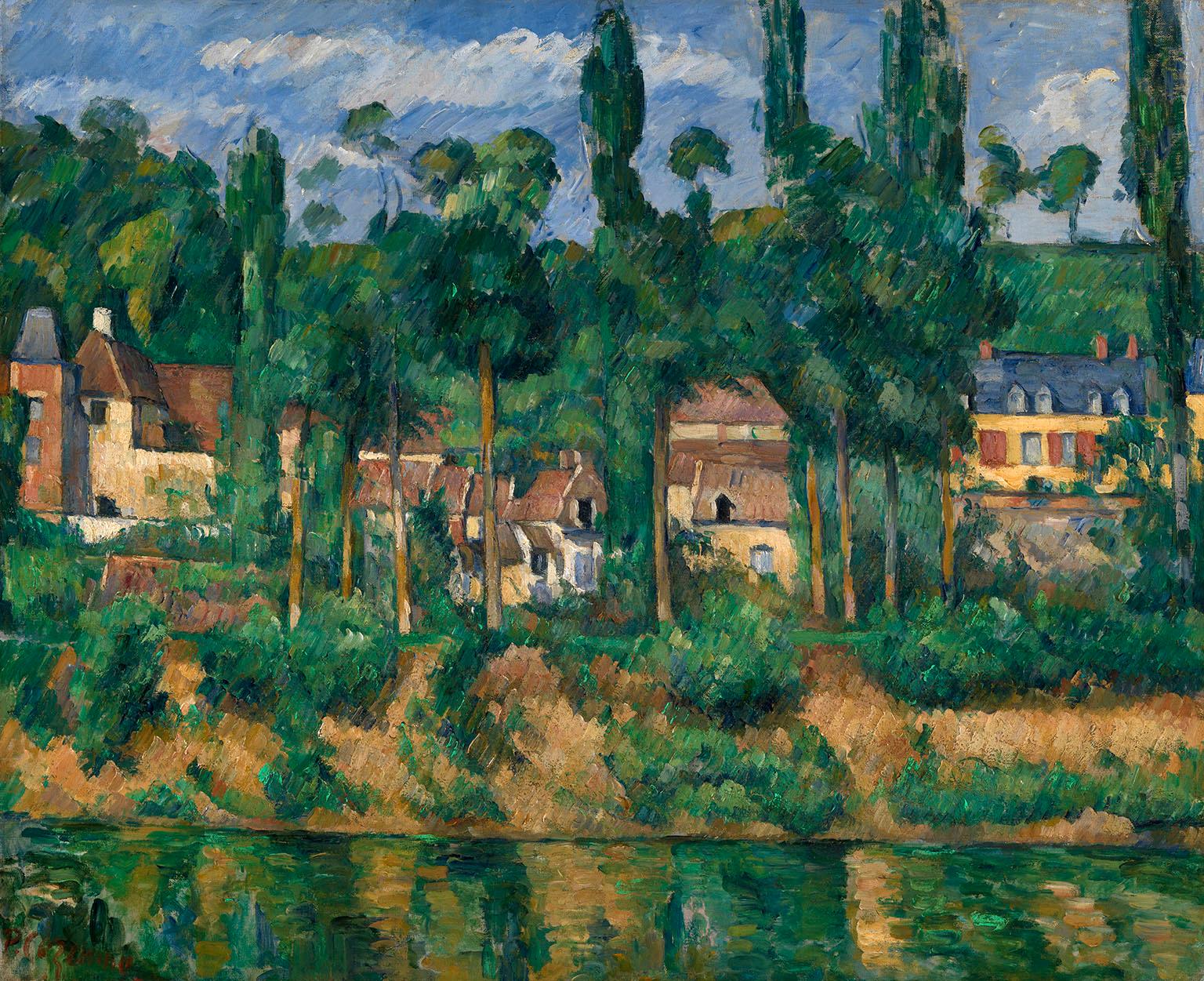
What does the Burrell Collection contain?
Paintings were among the first objects that were acquired for Burrell’s collection, which is renowned for its 19th-century French holdings. Glasgow was one of the best markets for French painting outside France at the turn of the 20th century, and the most significant dealer was Alexander Reid. ‘He did more than any other man has ever done to introduce fine pictures to Scotland and to create a love of art,’ Burrell enthused. Paul Cézanne’s Le Château de Médan (c1879-80) was bought from Reid’s gallery, as was Edgar Degas’ small work on paper Woman Looking through Field Glasses (c1869). Burrell had a particular admiration for Degas and owned more than 20 paintings, drawings and pastels. The Red Ballet Skirts (c1895-1900) is one of the collection’s highlights: a vivid pastel depicting three dancers dressed in red, waiting in the wings during a performance. Reid also introduced Burrell to the Glasgow Boys, the group of young Scottish painters that included John Lavery, from whom he commissioned a portrait of his sister, Mary, in 1894. Burrell also bought Northern Renaissance painting, 17th-century Dutch works and many pieces by the Hague School. After donating his collection to Glasgow, he continued adding to it, including a Rembrandt self-portrait from 1632 and Portrait of a Gentleman (c1639), partly attributed to Frans Hals, and which, at a cost of £14,500, was the highest price he ever paid for any object. In 1949 he also gave 49 paintings and 300 decorative items to Berwick Museum & Art Gallery, Berwick-upon-Tweed being the closest town to his grand home in the Scottish Borders, Hutton Castle.
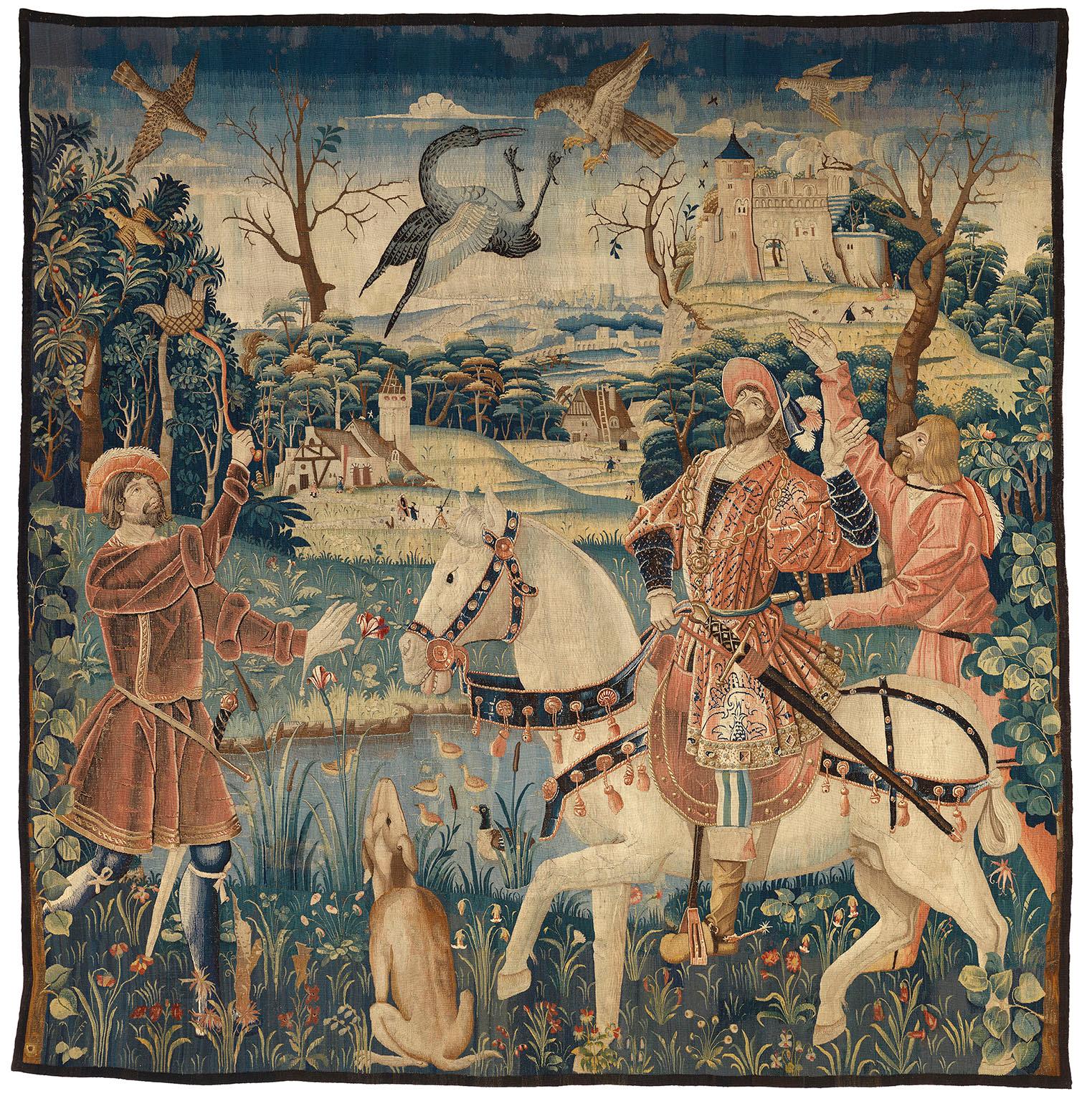
Burrell regarded his tapestries as the most significant aspect of his collection. There are around 200 examples, mostly dating from late-15th- and early-16th-century Europe. The subjects represented are wide-ranging, from religious and allegorical scenes to mythology, romance and heraldry. A particularly dazzling example is Fight Between a Falcon and a Heron, an early-16th-century Franco-Netherlandish tapestry depicting a group of excited huntsmen watching a fight between the two birds.
Another important part of the collection is its stained glass, which numbers more than 600 panels, ranging from small roundels to complete windows, some of which Burrell installed at Hutton Castle. A particular highlight is a panel originally from the Royal Window in the northwest transept of Canterbury Cathedral representing Princess Cecily, the daughter of Edward IV. Painted around 1485, the sumptuous blue, burgundy and golden-yellow design is one of the finest examples of late-15th-century stained glass. A mid-16th-century panel depicting the Virgin Mary in mourning was once owned by Sir Thomas Neave (1761-1848) a beneficiary of the transatlantic slave trade. It is one of several objects in the collection with links to the wealth generated from the exploitation of enslaved African people. Another is an ornate wooden chair from 1699 that originally belonged to the Cann family of Bristol, who amassed their wealth from their Caribbean plantations.
The largest part of Burrell’s collection is his Chinese ceramics, which he bought voraciously over a 30-year period. There are more than 1,000 individual pieces with fine examples of most of the main types of pottery and porcelain produced in China, from the Neolithic period to the 20th century, including an exquisite Meiping vase of the Hongwu period (1368-98), which is decorated with a five-clawed dragon.
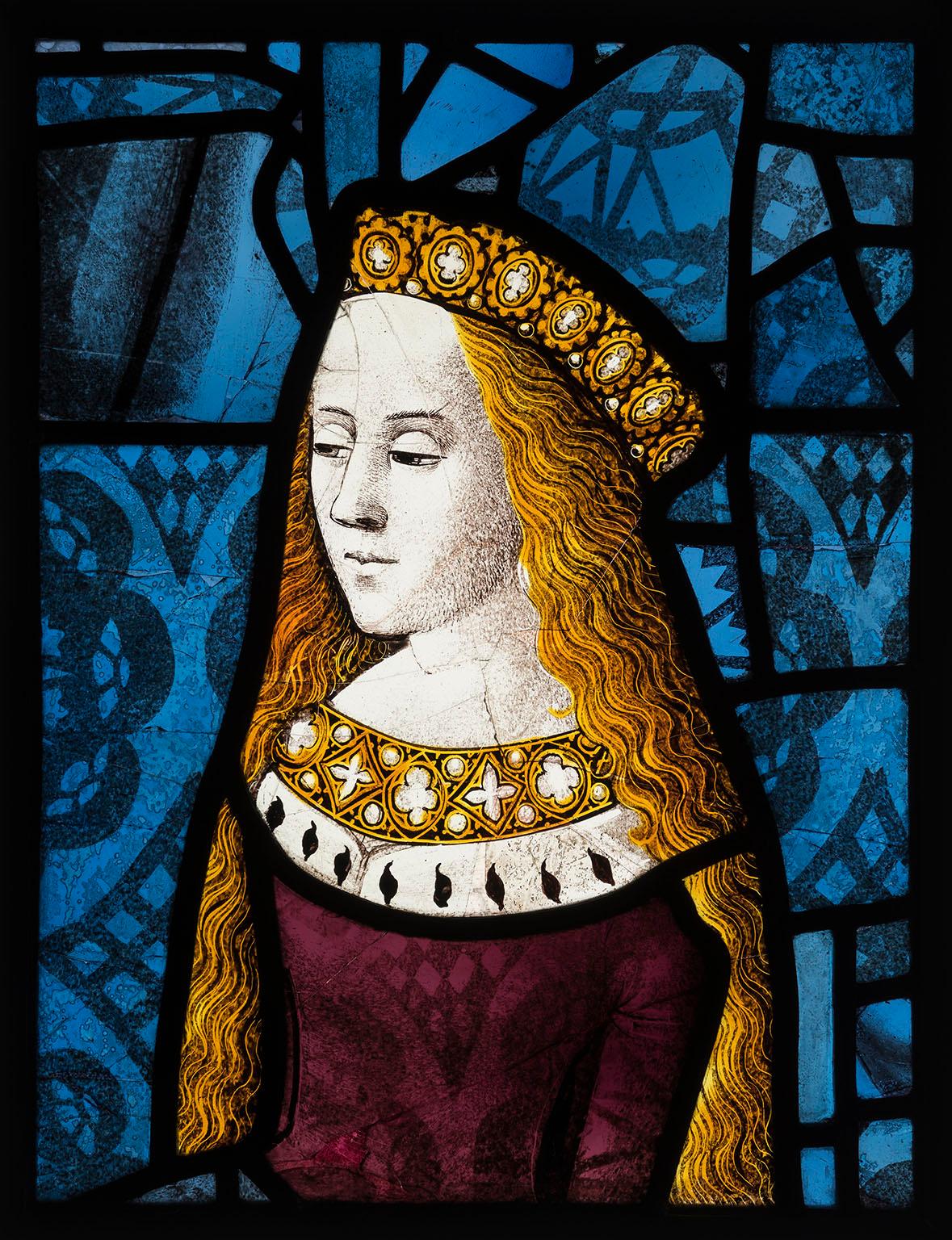
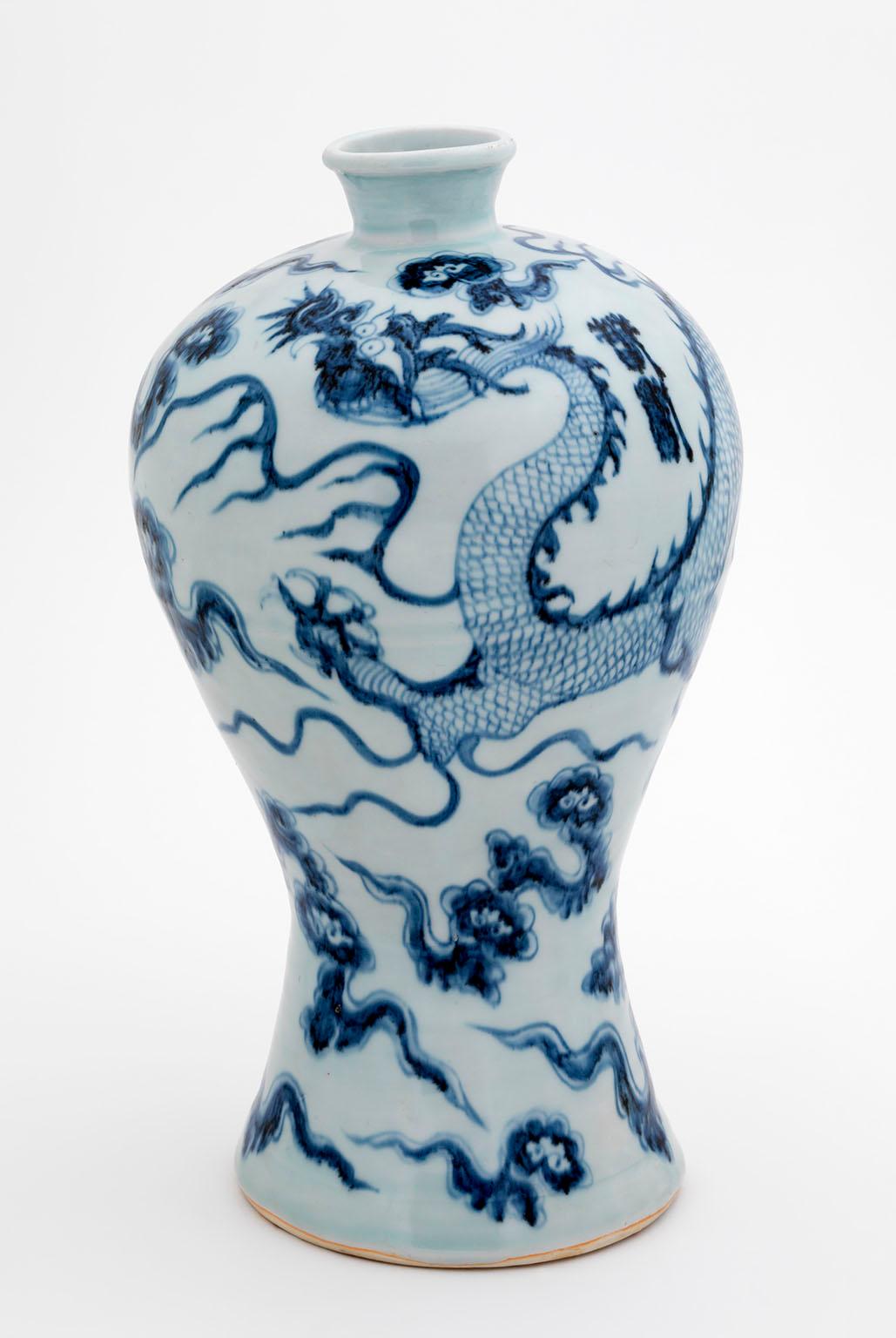
How was the Burrell Collection gifted to the public?
Burrell initially collected simply for his own enjoyment, though over time he became increasingly interested in sharing his purchases with the public, believing that everyone should have access to great works of art. ‘He simply wanted people to enjoy and be inspired by works of great beauty,’ say MacDonald and Bellamy, noting that he regularly loaned works to public exhibitions from the 1890s. In 1901 he was the largest single lender to the Glasgow International Exhibition, loaning more than 200 works, but it wasn’t until the 1930s, after he had been knighted for services to art (in 1927), that the idea of leaving his collection to the nation took root. Many of Burrell’s objects were housed at Hutton Castle, particularly his beloved Gothic pieces, but as his collection grew, more and more items were being loaned to museums, galleries, cathedrals and libraries across the country. By the 1940s the collection was spread across 36 separate venues and he was in talks with several interested parties – including the V&A and London County Council – about transferring it into public ownership. After much toing and froing with London institutions, Burrell decided that his collection should go to Glasgow, a decision buoyed by his friendship with Tom Honeyman, director of Glasgow Art Galleries. ‘When he told me that Lady Burrell and he had finally determined to present the entire collection to the City of Glasgow … I was too excited to be coherent,’ Honeyman recalled in his autobiography.
Burrell’s agreement with the Glasgow Corporation stipulated that his collection should be housed in a specifically designed building and that several of his rooms at Hutton Castle should be recreated for the display. By the time of his death, at the age of 96, a suitable site for the gallery had still not been found. It was only when Anne Maxwell Macdonald donated her 360-acre Pollok Estate to Glasgow in 1966 that a way forward emerged. Situated about six miles south of the city centre, it was the perfect location, though it took a further 17 years and an international design competition before Barry Gasson’s £20m building opened to the public in 1983. The Category A-listed building is constructed from sandstone and timber with an extensively glazed main section that incorporates stunning views of the surrounding parkland. Regarded as one of the finest public galleries of the late 20th century, it was this building, along with the 1988 National Garden Festival and the new Royal Concert Hall, that contributed to Glasgow being given the coveted crown of European City of Culture in 1990.
What improvements have been made to the Burrell Collection?
In its first three decades, more than 12 million people visited the Burrell Collection, which is now managed by Glasgow Life. But in recent years the building had become tired and shabby; the roof was leaking, its glazing needed replacing and the electrical systems required modernising. Furthermore, it just wasn’t large enough to display Burrell’s full collection, with 80 per cent of the holdings hidden away from view in gallery storerooms. The time had come to revitalise the Burrell for the 21st century, to improve the visitor experience and ensure that its world-class collection could be properly safeguarded for generations to come. Nearly half of the funding for the £68.25 million Burrell Renaissance project was committed by Glasgow City Council, with significant contributions coming from the National Lottery Heritage Fund, the Scottish and UK Governments and many other generous supporters. Works began in 2018 with roof repairs and the installation of modern glazing to make the building more air-tight and less susceptible to changes in temperature – a critical factor in the conservation of delicate works of art. These measures have also helped to improve the environmental performance of the building by reducing energy consumption. Indeed, sustainability has been an essential factor in the refurbishment project, with the introduction of energy-efficient plant machinery, intelligent environmental controls and low-energy lighting systems to reduce the building’s carbon footprint. A vast array of solar panels now produces renewable electricity for much of the site, and a degree of future proofing has been built in to eventually allow for the switch to low-carbon hydrogen fuel.
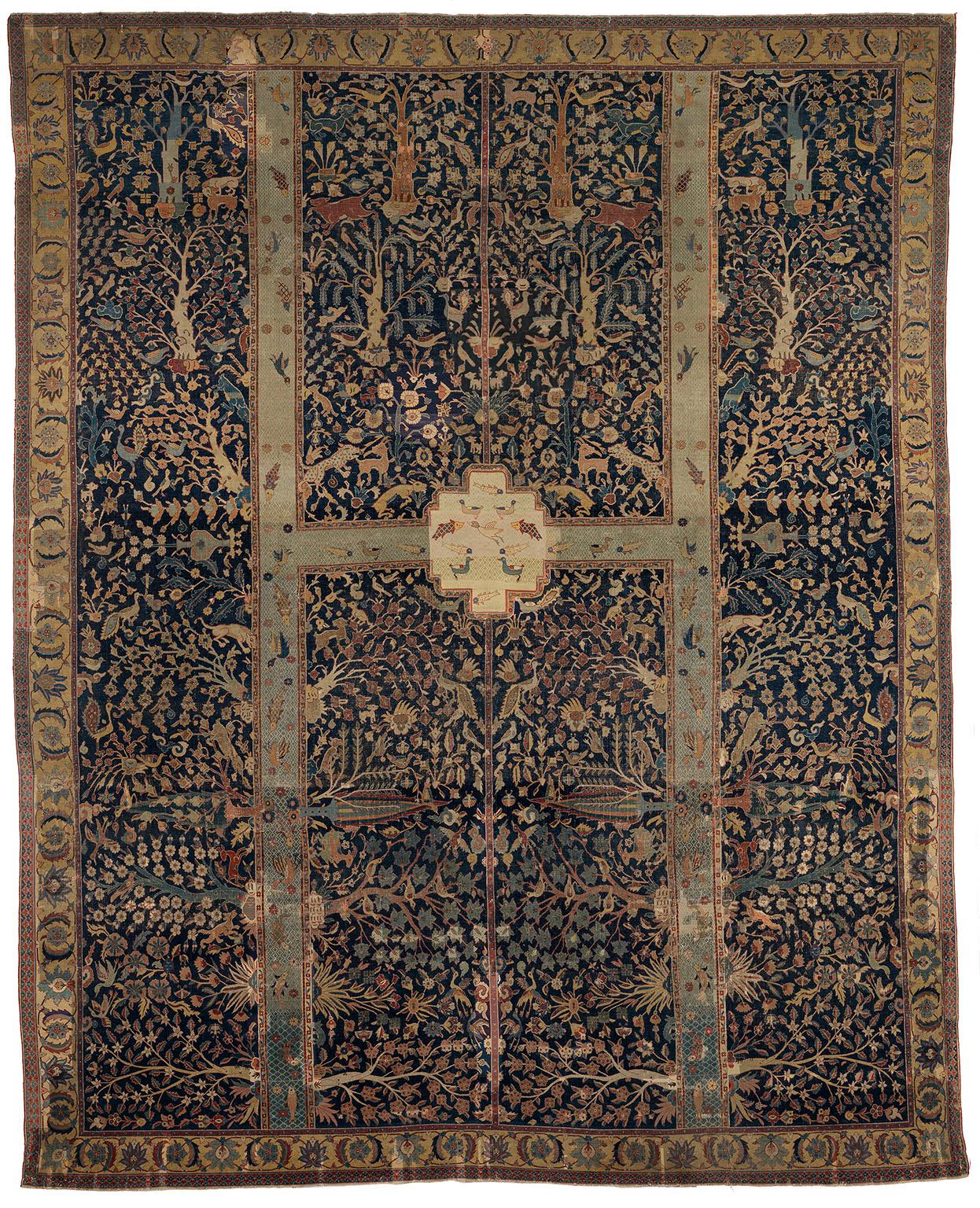
While the improvements to environmental performance are mostly unseen, there have been some striking structural changes. A new entrance improves access to the building, leading straight into the heart of the museum, where a central staircase now allows visitors to explore all three floors, including, for the first time, the lower-ground stores. ‘Many of the collection’s important and unique objects, which have not been seen for decades, or have never been on permanent display, will now go on show thanks to a 35 per cent increase in the museum’s gallery space,’ says Bridget McConnell, chief executive of Glasgow Life. Included among these objects is the stunning Wagner Garden Carpet, one of the three earliest surviving Persian garden carpets in the world. Dating from the 17th century, its paradisiacal design contains an abundance of animals, birds and insects frolicking amidst trees and garden plants.
Many of the improvements made to the Burrell Collection have been informed by an unprecedented outreach programme. As McConnell explains, ‘More than 15,000 local people have given ideas, insights and opinions in the biggest engagement exercise Glasgow Life has ever conducted; the feedback has shaped every aspect of the building’s redesign and has been instrumental in achieving an amazing new experience for visitors.’ Alongside new galleries, interactive exhibits, contextual displays, films, family-focused activities and an enhanced café, there is now a dedicated learning and education centre to help visitors better engage with the collection. Community feedback has led to the implementation of what McConnell describes as ‘an inclusive and innovative approach to interpretation’, and technology is playing a key role in engaging new and diverse audiences.
While Burrell was very much a product of the 19th century, the museum that carries his name was, in 1983, an exemplary 20th-century creation. The refurbished Burrell Collection promises to provide a museum experience fit for the 21st century and beyond. One wonders what Sir William would have made of it all, though as he once said, ‘The collection, not the collector, is the important thing.’